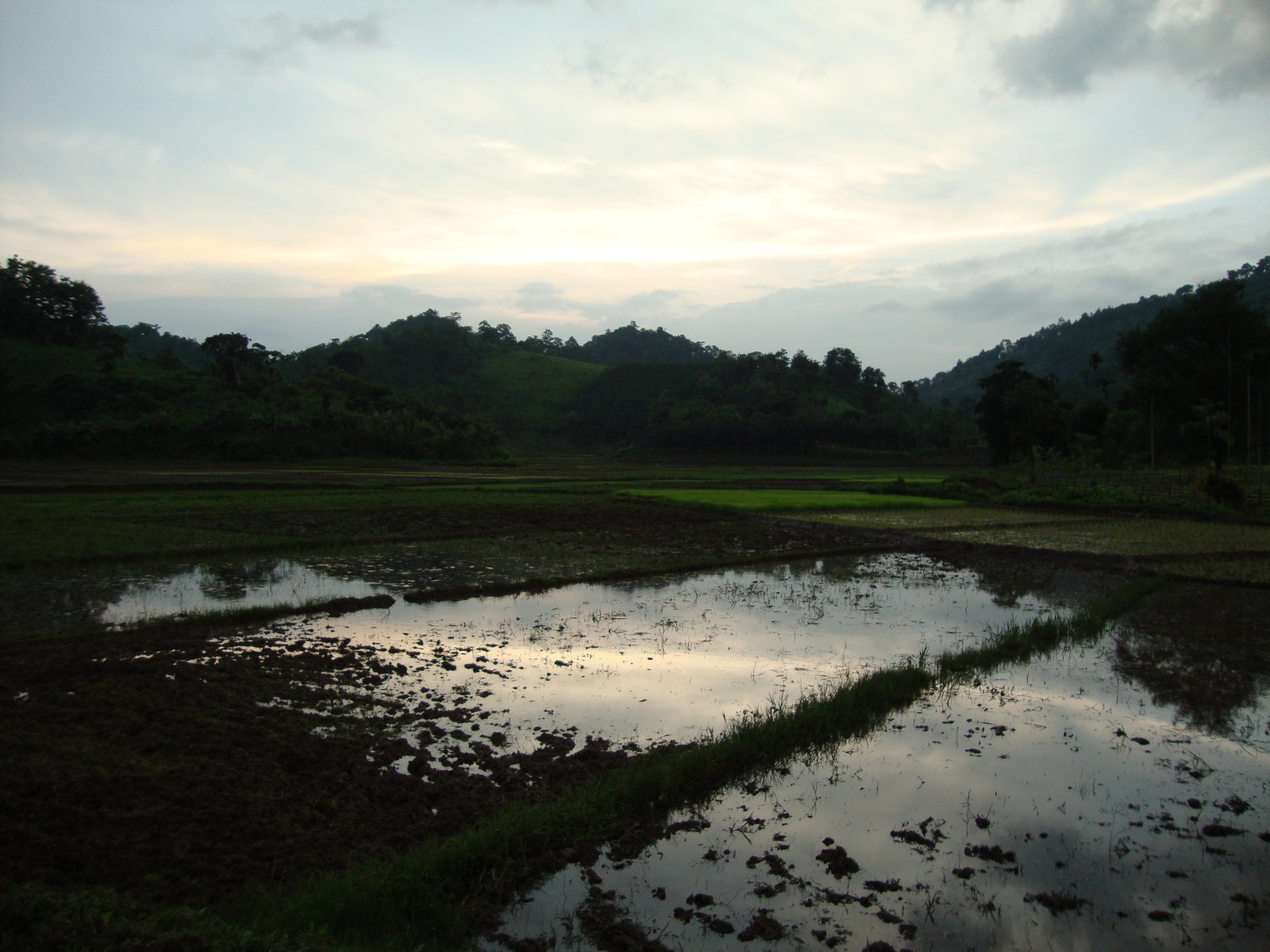BAJENGDOBA, MEGHALAYA, INDIA – On September 22 of last year, the Garo Hills of northeast India were ravaged by the worst floods in memory. Monsoon storms triggered flash floods in many of the region’s river valleys. The flooding and related landslides took the lives of around seventy residents of the hills, in addition to causing extensive property damage.
The Garo Hills have a special significance for me, because I spent a year living and teaching here between college and graduate school, from 2009 to 2010. When reports of the floods began to circulate in the days and weeks following September 22, I was horrified to think about such a catastrophe occurring to a place and to people I know and love. Now, in January 2015, I am fortunate to have the chance to visit the Garo Hills again and see the flood damage and subsequent recovery for myself.
The school where I taught, Riverside Adventist Academy, is located in the district worst-affected by the floods, North Garo Hills. On the morning of September 22, the Jinari River entered the school campus by opening a new channel leading right into the cafeteria and big boys’ and girls’ hostels (dormitories). The river toppled sections of the compound walls and brought branches and logs sweeping into campus.
Before the walls fell, the hostel students evacuated to the top floor of the classroom building as the rushing flood water rose above their knees. Three small boys lost their footing and were swept away by the current, but remarkably they were caught in the branches of a banyan tree on the edge of campus. Not a single student from Riverside school was lost in the flood, but one teacher drowned after helping many students to safety. His name was Rituraj Phukan, and he was 31 years old.
It has been almost four months since the floods, and I am happy to see that the school is recovering well. The broken sections of the compound wall have been replaced by temporary fencing. Teachers and non-teaching staff have spent weeks painstakingly cleaning the campus – shoveling mud out of the buildings, righting and re-rooting trees toppled by the water, and clearing away logs that washed onto campus. I am impressed by how beautiful the campus looks now, with graceful gulmohur trees casting their shade onto the walkways. Apart from the broken compound walls and an ugly landslide gash on a nearby hillside, there are few obvious signs that this place was inundated by a deluge just four months ago.
Riverside school will reopen on-schedule for the 2015 academic year in early February. The school and the surrounding community have begun to recover from the floods, but despite appearances, the recovery is far from complete. Damage to buildings and other infrastructure in the Garo Hills (such as the school compound’s walls) will take time to repair. Harder to quantify – and likely harder to repair – will be the human toll of the floods. From my conversations with teachers and students who were at Riverside on September 22, it is clear to me that the floods were a deeply traumatic experience. Many witnesses expressed shock that such a disaster could happen. One student told me that she still feels like it was all a dream. I have noticed more gray hair in the Garo Hills than I remember seeing five years ago. I wonder if the stress of having their homeland inundated is causing the population of the Garo Hills to go prematurely gray.
Even these emotional wounds will heal some day. The families that lost sons and daughters, mothers and fathers to the flooding and landslides will also eventually learn to live without the deceased. This will take years, but I am certain it will happen. I am also certain, though, that the great Meghalaya floods of 2014 will never be forgotten, as long as victims and witnesses of the floods are alive to tell their stories.
(This post continues coverage of the Meghalaya floods, which I started in this post.)




















